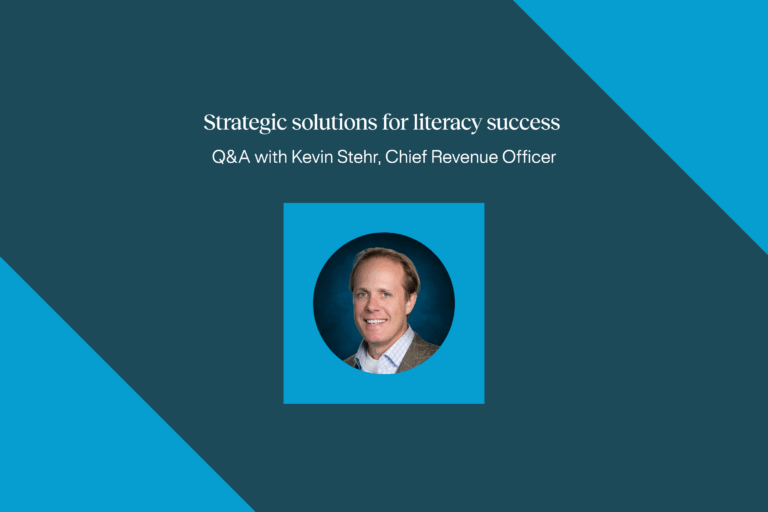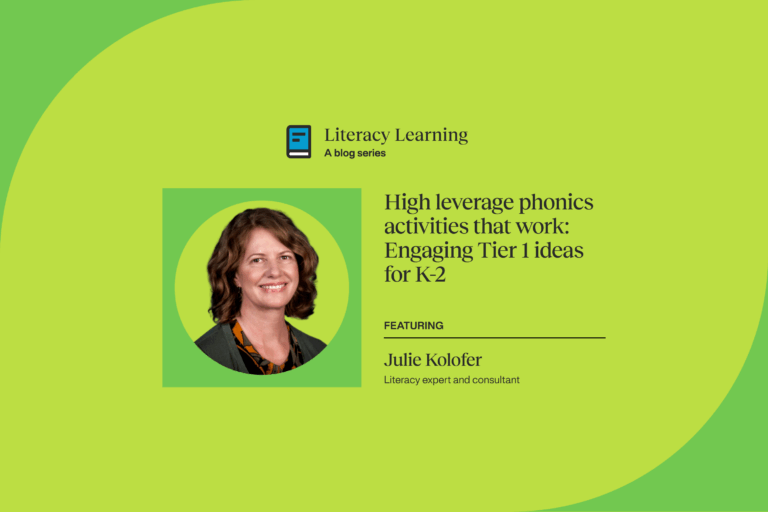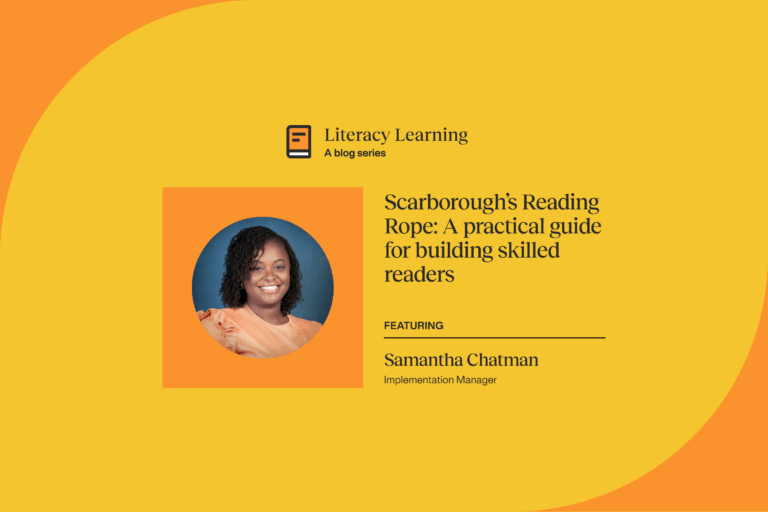Science of reading vs. balanced literacy vs. structured literacy

What is the science of reading?
The science of reading is a dynamic body of convergent evidence that informs effective instruction in all areas of literacy development. The research on reading draws from multiple fields including cognitive psychology, cognitive neuroscience, linguistics, and developmental psychology.
For too many years now, a disconnect has existed in U.S. schools between what decades of reading research and neuroscience tells us and how teachers are trained. Many teachers leave their schools of education woefully unprepared to teach reading based on the research, and school districts throughout the country continue to use approaches to reading instruction that have been proven counterproductive to what we know about how the brain learns to read. Because many universities have not made the shift yet to providing courses designed to teach skills based in the science of reading, too many teachers have not been supported in mastering the key components of how to effectively teach their students to read.
This is the most studied aspect of human learning.
Louisa Moats
What is balanced literacy?
The term and approach called “balanced literacy” emerged in the 1990s as a response to serious critiques of the whole language approach that was widely adopted in the 1980s and 1990s by school districts across the country. Whole language is a philosophy about teaching reading and writing, with origins that go back several decades. It is still widely in use throughout the US despite strong evidence today that its approach fails far too many students.
Is balanced literacy related to the science of reading?
Balanced literacy added minimal guidance in phonics to the whole language approach—attempting to ”balance” whole language with phonics. It focuses on components such as reading aloud, whole class shared reading, small group guided reading, and independent reading. Balanced literacy proponents share a belief that reading is a natural process that requires minimal explicit instruction. This is in direct contradiction to what the science of reading has demonstrated.
Senior correspondent and producer Emily Hanford produced the program Hard Words—Why aren’t kids being taught to read? for American Public Radio in 2018 and followed this up in 2022 with the six-part series, Sold a Story. In these programs, Hanford spells out how and why so many schools still use balanced literacy despite what the science shows about how children learn to read.
The basic assumption that underlies typical reading instruction in many schools is that learning to read is a natural process, much like learning to talk. But decades of scientific research has revealed that reading doesn’t come naturally. The human brain isn’t wired to read.
Emily Hanford
What is structured literacy?
You might have heard the term structured literacy used to describe an approach to reading instruction. The term originated with the International Dyslexia Association® (IDA®) in 2016 to differentiate reading instruction and programs that are truly informed by the science of reading from those that are not.
[Science of reading-informed instruction and programs] “are vital for students who are dyslexic, but it’s not just those students,“explains Dr. Susan Hall, Retired Co-Founder, 95 Percent Group in a webinar on understanding the science of reading and structured literacy. “Structured literacy explicitly teaches these word identification and decoding strategies that benefit all students.”
A structured literacy approach is grounded in evidence-based instruction—teachers and literacy specialists use a scope and sequence which dictates the order in which concepts and content are taught using explicit and systematic, cumulative instruction.
In addition to the typical broad stroke universal screeners, structured literacy uses ongoing, finer-grained diagnostic assessments to monitor student progress in order to provide additional practice and scaffolding to close gaps quickly when they are identified.
Is structured literacy related to the science of reading?
Structured literacy is the application of the science of reading. It uses the principles and findings of the science of reading to help students develop the necessary foundational reading skills of phonemic awareness, phonics, vocabulary, fluency, and comprehension.
It’s important to note that the science of reading and structured literacy do not refer to particular programs for students or for teacher professional development. Many well known programs such as Orton-Gillingham method, Lindamood Phoneme Sequencing Program (LiPS), and others implement structured literacy in their approaches. This is the case as well for specific programs for teacher professional development—for example, the LETRS (Language Essentials for Teachers of Reading and Spelling) professional learning program, or 95 Percent Group’s teacher professional development. All of the above are informed by research evidence.
Which method is preferred: the science of reading vs balanced literacy?
The science of reading is preferred over balanced literacy when teaching students to read. The main goal behind balanced literacy instruction is to get students to fall in love with reading. While this form of instruction is completed using a variety of teaching methods including phonics, it typically lacks the structured support that the science of reading can provide. Because of its flexible nature, it can also lead to a lack of consistent reading skills among students since the components of reading can be taught disproportionately, depending on individual teacher preferences.
Meanwhile, the science of reading relies on explicit and systematic instruction that is grounded in evidence-based research. This method has a clear framework for teaching students the foundational literacy skills. The structured and targeted instruction is also beneficial to all students including those struggling to read and those with learning impairments.
Reading matters
Multidisciplinary research has confirmed that 95 percent or more of students can learn to read when provided with high quality, evidence-aligned instruction. Yet many students today are not learning to read. The 2022 “Nation’s Report Card” found thirty-three percent of fourth-grade students performed at or above the NAEP Proficient level and sixty-three percent of fourth-grade students performed at or above the NAEP Basic level on the reading assessment. According to EAB’s 2020 “Leading for Literacy,” 60 percent of elementary teachers have never been trained in strategies for teaching the foundational reading skills.
Every child has the right to read and to read well. John B. King, former US Secretary of Education, and Jacquelyn Davis, fellow at Betherwether.org, write in The74: “The earliest years of a child’s education are critical for gaining functional literacy. From pre-K through third grade, students learn to read, and from grade three forward, they read to learn. Whether it’s science experiments, math word problems or drama scripts, students cannot learn if they cannot read, and 75% percent of children who are behind in third grade will never catch up…The resulting deficit trails students for the remainder of their academic life and beyond: For example, struggling readers are four times more likely to drop out of high school.”
What needs to change?
School districts and schools across the country are taking heed of what the science of reading research identifies about how best to teach reading. They’re committing to making the necessary changes to radically improve literacy instruction. Several states have adopted legislation and policies that require all literacy instruction to be grounded in scientifically-based methods. According to an EdSource post by writer John Fensterwald (March, 2023), Colorado, Mississippi, Tennessee, and Connecticut have created comprehensive early literacy plans as their literacy road maps. They require or incentivize districts to train teachers and adopt textbooks tied to the science of reading research. New York City, the nation’s largest district, announced in 2022 that all districts must implement curricula that are based in the science of reading.
We still have a long way to go to arrive at a place where 95 percent or more of students can learn to read when provided with high quality, evidence-aligned instruction. Numerous experts in the science of reading call for significant changes in schools of education and professional development for teachers, principals, and school and district administrators, and ongoing coaching support for teachers in the science of reading. There is consensus among the literacy experts that a culture change is required.
A look at the research reveals that the methods commonly used to teach children to read are inconsistent with basic facts about human cognition and development and therefore make learning to read more difficult than it should be… in short, what happens in classrooms isn’t adequate for many children.
Mark Seidenberg
Implementing science of learning: Success stories and best practices
Making visible the success factors and best practices of states, districts, individual schools, and teachers that have implemented reading instruction and practice aligned with the science of learning is an essential part of making the culture change that’s necessary and nurturing courageous literacy leaders to do the work. We’ve put together a few exemplars who share their knowledge and experiences—from a small school of 590 students to a 4-school rural district to a major urban county with 59 schools.
School districts and schools implementing science of reading
Fairfax School District, Kern County, California
4 schools, 2688 students
David Mack, EdD, Chief Administrator of Business Services has worn many hats in the Fairfax School District—from math teacher to school principal. He did his dissertation on the topic Improving Fidelity of Implementation of a Tier I Phonics Program: An Improvement Science Study. David Mack shares his research, his experience in the district, and what he’s learned about best practices in implementation of the science of reading. Read the post.
Val Verde Unified School District, Moreno Valley, California
21 schools, 20,000 students
Spotlight California: Driving Momentum for Systemic Change
Schools in Val Verde were facing several challenges in improving student reading outcomes and have been on a journey to strategically implement science of reading practice in their classrooms for a number of years. Val Verde’s journey highlights the importance of evidence-based, data-driven instruction, ongoing support, and a commitment to equitable education for all students. Aimee Garcia, Val Verde K-12 District Director of Education Services, has this to say about a consequence of not applying the science of reading: “The scope and sequence of a program is essential—if everyone is choosing to do their own thing, we are unintentionally creating an equity problem because we can’t guarantee that all students will receive instruction on the skills they need at the time they need it.” Read the post.
Fulton County Schools, Atlanta, Georgia
59 schools, 90,000 students
Science of Reading is the Roadmap
For years, decisions about reading curriculum were left to the discretion of individual schools in Fulton County. Jennifer Burton, Fulton County’s director of literacy, weighed in on this idea: “This resulted in a hodgepodge of balanced literacy-based programs, not backed by the science of reading, that clearly weren’t reaching all students,” she said. When you have many school leaders all making different decisions, it becomes difficult to have clear communication and one guiding direction. The district needed one program based in the science of reading: a literacy program to implement across ALL of their elementary schools in order to all move in the same direction towards reading proficiency.
Additional Resources from 95 Percent Group
Structured Literacy
Insights from thought leaders and resources to help you bridge knowledge and practice as you bring structured literacy to your school or district.
Science of Reading 2.0: Implementation made easy
The next generation of the science of reading connects research about reading and learning to help educators implement effective literacy instruction.
Download this easy-to-use guide here.
Efficacy Studies
Efficacy studies designed with guidance from the Every Student Succeeds Act (ESSA), to meet the highest levels of evidence
We can all make a difference
Every child has the right to read and to read well. At the same time, teachers have the right to teach their students to read based on the most up-to-date knowledge about how the brain processes text. And parents and caregivers have the right to know and understand the research that shows that 95 percent or more of young people can learn to read when provided with high quality, evidence-aligned instruction. We can all make a difference in ensuring that our children and our students have the support and skills they need for success.
Learn More
95 Phonics Core Program® provides explicit, systematic, and cumulative Tier 1 phonics instruction for the whole class. It is strategically designed to reduce or prevent intervention needs before they arise. In 30 minutes a day, the program builds critical phonics skills through explicit instruction to develop strong readers, K-5.
95 Phonemic Awareness Suite™ is a proven set of resources that equips your teachers with professional learning and consistent but differentiated instruction for students receiving Tier 1 and Tier 2 instruction, and assessments that pinpoint deficits and map them to specific lessons proven to close those gaps.
95 Literacy Intervention System™ is a school and district-level resource that provides educators with the tools and data they need to make informed decisions that move students toward skill mastery more quickly. The 95 Literacy Intervention System combines assessment data, grouping tools, and resource recommendations into one powerful system designed to bring about systemic improvement in literacy outcomes.
Are you interested in learning about how you can bring an effective and efficient structured literacy approach, grounded in the science of reading, to your school or district? Contact 95 Percent Group today.



